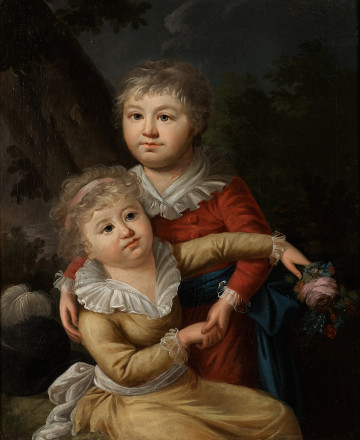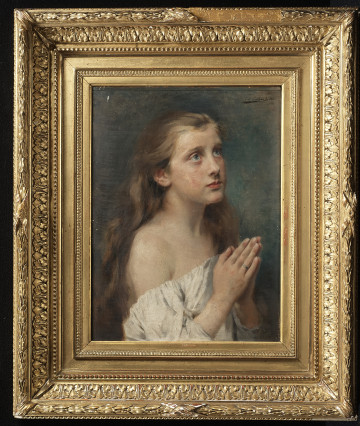
Portrait of children
1. ćwierć XIX wieku
Castle Museum in Łańcut
Part of the collection: European classics of modernity
The work and theoretical reflections of Stanisław Ignacy Witkiewicz – one of the most recognisable Polish artists of the first half of the 20th century – largely revolved around the concept of form. His exploration of this idea led to the publication of his treatise New Forms in Painting and the Resulting Misunderstandings (1919) and his involvement with the avant-garde Kraków Formists (1917–1922). Unlike many of his contemporaries and most avant-garde artists, Witkacy had a rather dystopian outlook. Rejecting abstraction, he believed that the potential for structural innovation and further distortions of realism – what he called "perverse compositions" and "subversive harmonies," characteristic of his Formist period –had been exhausted. In his view, “pure” art was doomed to fade in an era of social democratization, mechanized labour, and cultural standardization, as metaphysical experience gave way to mere utility. This perspective led him to abandon traditional easel painting altogether in favour of pastel portraits, which became his main commercial endeavour through the S.I. Witkiewicz Portrait Firm, founded in 1925. During its first exhibition at Czesław Garliński’s Salon in Warsaw, the artist displayed a formal business-style contract outlining terms, pricing, and rules of collaboration with agents – mimicking the legal framework of a regular business.
This portrait of a child, with a bowl haircut, a scout uniform with a functional cord, and a highland-style scarf draped over the shoulders, was created in April 1934, likely during Witkacy’s financially successful but exhausting stay in Nowy Sącz. It belongs to category B+E, reserved specifically for children. The accompanying signature codes indicate that the artist abstained from nicotine (NP) and alcohol (Nπ) during the session. Witkacy also had a habit of incorporating symbolic props – usually either fruit or a book – to express his opinion on the intellect of his often unwilling young sitters.
Szymon Piotr Kubiak
Object type
painting
Technique
pastel
Material
paper
Origin / acquisition method
purchase
Creation time / dating
Creation / finding place
Owner
The National Museum in Szczecin
Identification number
Location / status

1. ćwierć XIX wieku
Castle Museum in Łańcut

koniec XIX w.
Castle Museum in Łańcut

circa 1505 — 1515
National Museum in Szczecin
DISCOVER this TOPIC
Castle Museum in Łańcut
DISCOVER this PATH
Educational path